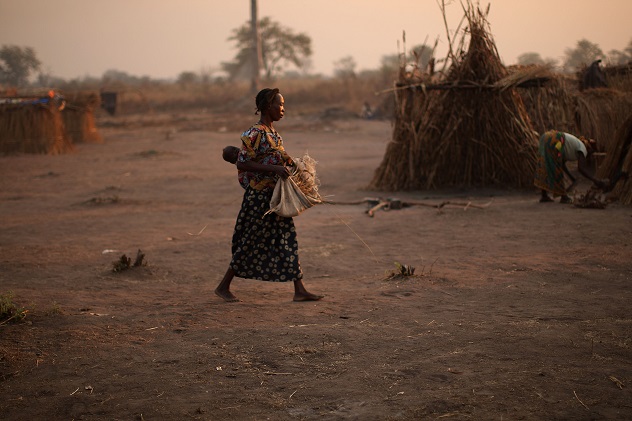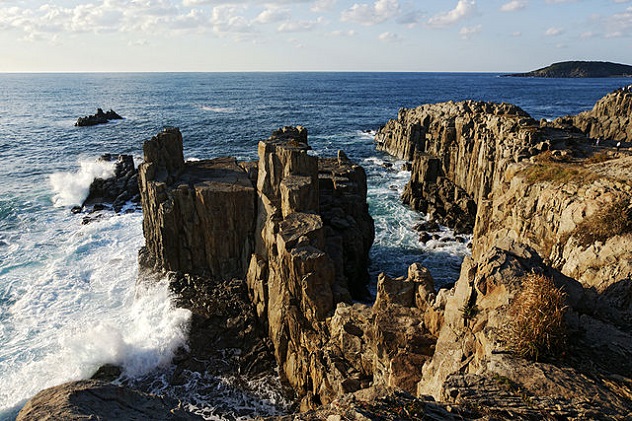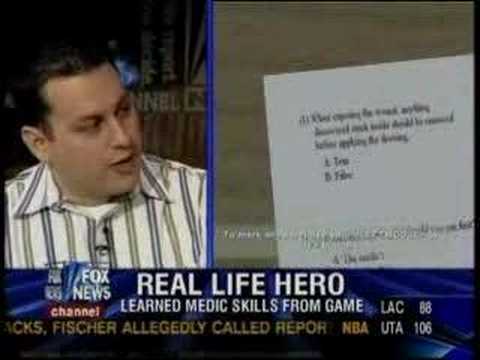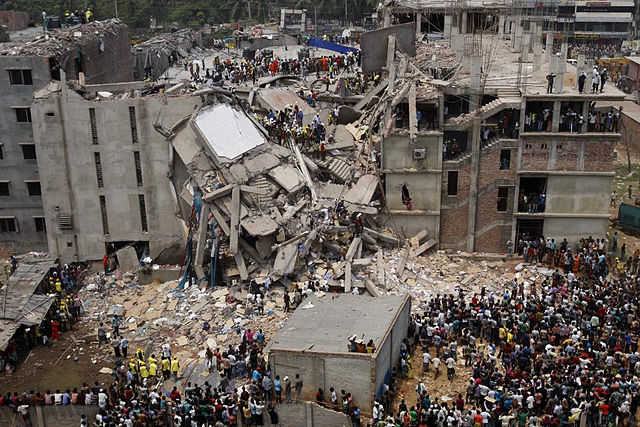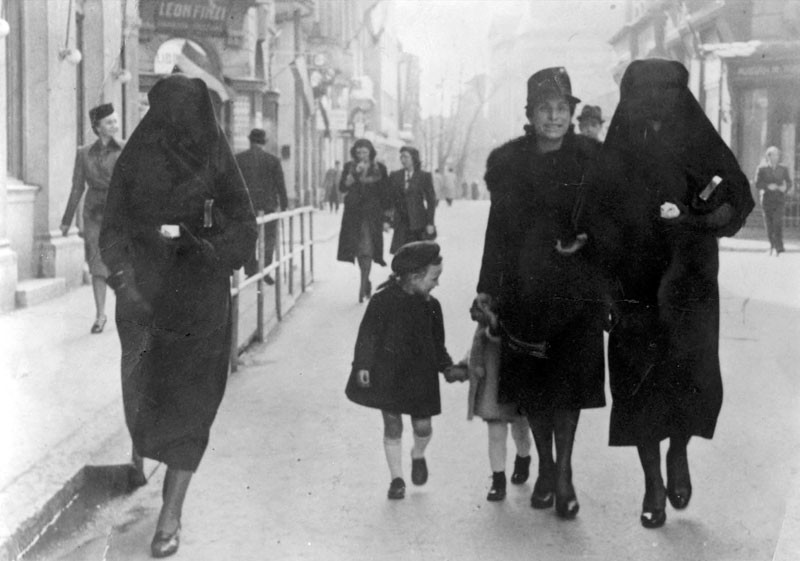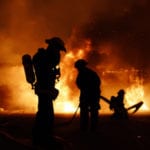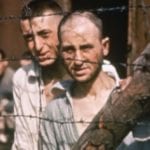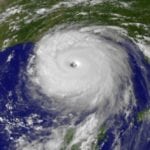10Bernard Kinvi
Since 2013, the Central African Republic has been ravaged by a civil war between the Muslim Seleka movement and the Christian anti-balaka (“anti-machete”) militias. Both sides have committed massacres and other atrocities, killing thousands and driving hundreds of thousands from their homes. So Father Bernard Kinvi was putting himself at great risk when he began sheltering wounded Christians and Muslims alike at his small mission hospital in Bossemptele. The danger became even greater when the Seleka were ousted in January 2014 and the anti-balaka began converging in force on his community as part of their mission to wipe out the country’s Muslims once and for all. Over the course of several months, Kinvi gave sanctuary to thousands of Muslim refugees at his mission, despite constant threats from the anti-balaka. At one point there were 1,500 Muslims under his protection. Kinvi also made regular trips to look for hidden refugees or bury bodies, despite the fact that he didn’t even have access to a car of his own (the Seleka had stolen it on their way out). There were occasional truck convoys that took Muslims to safety, but otherwise he received little official aid and often had to feed the refugees from his own stores. The majority of the refugees in his care were evacuated by April 2014, and violence in the area has significantly abated. But, as Kinvi has stated in interviews, continued tensions mean that conflict could break out again at any time.
9Yukio Shige
“Chotto Matte Man” (“Hold On, Wait Man”) might sound like an unusual hero, but Yukio Shige has done immense good with those simple words. In 2003, the soon-to-be retired police officer from Tojinbo, Japan was finishing one of his last shifts when he came upon a couple planning to kill themselves by leaping off the Tojinbo cliffs because they were in a terrible financial position. Shige was able to dissuade them from jumping to their deaths and attempted to get them aid through the public welfare office. Tragically, the couple could not get any financial assistance and ultimately hanged themselves. After that, Shige became determined to prevent further suicides, dedicating his retirement to helping those in need. At the head of a group of volunteers, Shige now patrols the Tojinbo cliffs in search of potential jumpers. Rather than physically restrain them, the group’s methods mostly involve attempting to engage the suicidal in conversation and encourage them to work through their problems instead of ending their lives. Since suicide attempts are often impulsive acts, this thoughtful approach had been successful in preventing 500 suicides by 2009. Unfortunately, Shige says that some of the people his group dissuaded from plummeting to their deaths went on to end their lives elsewhere. Combating suicide can be dispiriting work, but Shige isn’t giving up any time soon.
8Paxton Galvanek
On November 23, 2007, Paxton Galvanek and his wife were driving down I-40 in North Carolina when they saw an SUV overturn and catch fire. Leaving his wife to call 911, Galvanek raced to remove the trapped passengers from their burning vehicle. After getting everyone to safety, Galvanek noticed that the SUV’s driver was bleeding profusely due to two severed fingers. With no formal medical training to draw on, Galvanek remembered medical simulators from the video game America’s Army, which had explained the procedure for dealing with severe bleeding. Since the game was designed as a recruiting tool by the US Army, the medical simulator was based on actual combat medic training and his experience playing the game allowed Galvanek to prevent the driver from bleeding out. Although many media outlets focused on the video game aspect, let’s not lose sight of how brave it was to run to a burning vehicle to rescue horribly injured passengers in the first place.
7Didar Hossain
In May 2013, Didar Hossain was a line worker making around $70 a month when the nine-story Rana Plaza factory building collapsed in Dhaka, Bangladesh. The collapse killed hundreds of people and trapped dozens more. Hossain, who worked in a factory directly opposite Rana Plaza, raced to help the survivors. Against the warnings of everyone else present, he found a tunnel in the rubble and used it to enter the collapsed building and look for stranded workers. He carried 17 people to safety before encountering Aana Akhter, a young woman whose right hand had been crushed beneath the rubble. The only way to get Akhter to safety was to amputate the hand, but a doctor refused to go into the collapsed building, meaning Hossain had to carry out the procedure himself. He obtained an anesthetic injection, which partially numbed Akhter’s hand, but the blade he had to use was rather dull and Akhter naturally began screaming and crying. Soon, Hossain was crying as well. Ultimately, Hossain saved Akhter’s life by removing her hand. He then continued to search through the collapsed building until he had carried a total of 36 people to safety. Afterward, all the untrained rescuer had to say about his heroism was that he was “an ordinary person” and that he was glad to be able to help. When he met with Akhter in the hospital, he apologized to her for the pain he had caused her. She rebuffed it, saying that if anything she was sorry for the hardship he had endured in saving her.
6The Muslim Heroes Of The Holocaust
During World War II, many Muslims found themselves under the control of Germany and its allies, and quite a few worked to protect their Jewish neighbors from persecution. In Yugoslavia, Ahmed Sadik, his daughter Zejneba (pictured above right), and his son-in-law Mustafa hid Jewish families in their homes until they could be smuggled to safety. Zejneba also brought food to Jewish work gangs while Ahmed successfully pulled Jewish friends of his off a train to a concentration camp and provided them with false papers that saved their lives. Sadly, Ahmed was caught and sent to Jasenovac concentration camp, where he died. He went to the camp on the same train he had saved his friends from. Albanian Muslims Lima and Destan Balla sheltered 18 Jews in their home for a time, even secretly delivering a baby for one of the fugitives. The Grand Mosque of Paris is estimated to have saved around 100 Jews by providing false documents claiming they were Muslims. In 2013, an Egyptian doctor named Mohamed Helmy became the first Arab to be honored in Yad Vashem, Israel’s official Holocaust memorial, for his actions in hiding four Jews at his cabin near Berlin until the end of the war.
5Lou Xiaoying
While most of the stories on this list involve a single dramatic situation, the heroism of Lou Xiaoying took a very different form. China has an ongoing problem with infant abandonment and the impoverished Xiaoying has stepped up to care for every abandoned child she could. It all started in 1972, when Xiaoying and her husband found an abandoned child in a local train station in Jinhua, Zhejiang Province. Even though the couple were in such desperate straits that they were scavenging through garbage on the station floor at the time, they took the child to raise as their own. Since then, the couple have rescued more than 30 abandoned babies, although 12 tragically died in infancy. It’s truly awful that the Xiayongs had to save so many children from such dire circumstances. In January 2013, official figures estimated that there were around 615,000 orphans or abandoned children in China, yet only around 109,000 received government care.
4Minnie Vautrin
In December 1937, Japanese troops captured the Chinese city of Nanking. The events that followed would become known as the Rape of Nanking, as hundreds of thousands of Chinese people were executed or sexually assaulted. Things could have been even worse if several foreigners in Nanking hadn’t worked to protect the locals. Among them was Minnie Vautrin. Vautrin was an American immigrant from Illinois who had been president of Nanking’s Ginling College since 1919. When the massacres started, she declared the college a civilian safety zone and more than 10,000 women eventually sought shelter there. On many occasions, Vautrin was the only thing that stood between the soldiers and their intended victims, often having guns waved in her face. Unfortunately, even though she saved the lives of countless people, Vautrin’s experience of the massacres had a profound impact on her and she later committed suicide. Minnie Vautrin’s heroism has often been overshadowed, since one of her collaborators in Nanking was the heroic Nazi party member John Rabe, and the image of a Nazi saving the lives of thousands has attracted more attention than the actions of an American woman. Even the 2009 film about the Rape of Nanking decided to change her name and make her character French while focusing on Rabe’s actions.
3Mohammad Salman Hamdani
The son of Pakistani immigrants, Hamdani was a former police cadet and trained emergency medical technician. In 2001, he was a lab analyst at Rockefeller University’s Howard Hughes Medical Institute. On September 11, he was one of the first responders to the attack on the World Trade Center, although he was not acting in an official capacity. Sadly, this heroism ended up costing him his life, and it would take months before his remains were found beneath the rubble. Unfortunately, due to his name, suspicion was immediately cast on him following his disappearance. Immediately after the attack, law enforcement circulated his photograph with the words “hold and detain” written underneath it. It wasn’t until some time after his confirmed death that Hamdani was cleared of suspicion. Eventually, the government acknowledged their mistake enough that his name was listed in the legislation for the Patriot Act as someone who had acted heroically during the attacks and a street name was changed in his honor. Still, his family reports that it has proven difficult to have his name listed on 9/11 memorials.
2Shail Devi
In January 2015, a young Hindu man was found dead in the eastern Indian village of Azizpur. It was suspected that he had been murdered because of an affair with a Muslim woman. In response, local Hindus launched an anti-Muslim riot. At least four Muslims were killed, three of them burned to death. Shail Devi, a Hindu widow in her fifties, was begged for shelter by a group of her Muslim neighbors. She allowed them entry into her thatched house, hid them in a corner room, and then locked the front door from the outside. This left her exposed to a heavily armed mob searching for the hiding Muslims. Somehow, Devi found the courage to bluff her way through the situation, persuading the mob to leave her alone because she was a Hindu. For saving 10 Muslims, Devi was awarded 51,000 rupees (roughly $800) by the Indian government, while her daughters each received 20,000.
1Lassana Bathily
On January 12, 2015, wannabe Isis member Amedy Coulibaly entered a Parisian kosher market and killed four people. He likely would have killed many more were it not for a Malian Muslim immigrant named Lassana Bathily, who acted quickly to hide more than a dozen customers in the basement freezer. They stayed there for several hours while Coulibaly engaged in a standoff with the police, having closed the door and window shutters. Eventually, Bathily snuck out of the building to get word to the police, escaping alone through a fire escape since more people leaving would likely be detected. Similar to Mohammad Hamdani, he was initially suspected of being another perpetrator and was placed under arrest for 90 minutes, even as he delivered the police a shutter key that would allow them to quickly enter the building and kill Coulibaly before he could discover any of the hidden customers. Dustin Koski is no civilian hero, but here’s his YouTube channel anyway.
